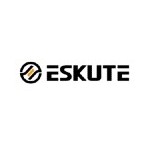Eskute: 7 Things You Should Know Before Buying Your First Electric Bike
As you already know, the real advantages of the E-bike, or electric bikes, are climbing performance, wind immunity and better reach. For those with knee pain or other medical conditions such as exercise-induced asthma, electric bikes can dramatically improve your sports lifestyle. They allow you to come to work feeling refreshed or even have your loved ones join in the fun. Electric bikes offer the same benefits a conventional bike can, with the surplus of cost efficiency, health benefits and most important of all - a fabulous ride.
Now that we encourage you to read more, it's time to consider several vital factors for you to consider when purchasing your first bike. A piece of information - there are over a thousand different models on the European market alone!
1. the playing field
There are a ton of electric bikes designed for different purposes. The spectrum is infinite, so to find exactly one, we recommend that you think. How exactly will you spend your day and when will you incorporate an electric bike? Think about where you will ride your electric bike most often. E-bikes are generally geared towards different types of activities and terrain. The few most common are cargo transport, trail rides, cruising, downhill, road biking, riding on sand and snow (fat tire), travel, child transport and urban transportation. These are the questions you should ask yourself before entering the e-bike playground, the store.
2. Riding system
Pedelecs and "Twist-n-Go" are the two main types of electric bikes. A brief description of Pedelec is a type of bicycle that partially depends on motor assistance. The assistance, called 'pedal-assist', is revealed when the cyclist is pedaling the e-bike automatically. In most countries, the engine power is regulated at 250W and up to a maximum speed of 25km/h. Once the speed limit is reached, the engine automatically stops all assistance. There is also a high-speed alternative to the 25km/h Pedelec, a 45km/h ride. The downside is that passengers need to register a special license, plates and insurance. The rules and regulations for each country are different, so it's always a good idea to ask at the local bike shop near you.
"Twist-n-Go" e-bikes use a switch to activate engine assistance. They can depend entirely on engine power to power the bike; pedaling will not be necessary.
3. Positioning the engine
Hub motor or crank motor, I'm sure you've heard, if searching is all you do. A hub motor is mounted on one of the wheels, most commonly on the rear wheel. They tend to be quieter than their counterparts, but less effective when a hill climb is required. The Crank engine is mounted on the underside of the frame. It can be a little louder depending on the brand or type, but it generates more energy. Always choose renowned brands such as Bosch, Bafang, Yamaha or Shimano.
4. Battery
All rechargeable batteries are made of lithium ion these days, just like ours. The quality of a battery makes a big difference in the performance of an e-bike. Since batteries degrade and hold a smaller charge over time and use, finding out that you have less than 10 km of distance left is a drag. Our internal battery is backed by a two-year warranty, enough to give you a ride for your money. In addition, the estimated charge life of a Li-ion battery is about 800 full cycles. So if you cycle twice a week, it will take you more than three years of commuting.
Better batteries are also sure to charge faster. Ask which batteries the e-bike supplies before drawing a conclusion.
5. Scope
Probably the most important aspect of an e-bike. The range is the total distance the e-bike will travel on a single charge. Determining range involves a complicated process of calculating battery capacity, speed, rider weight, ride profile, pedal assistance level, and engine output for assistance. So if you only ride 10 km a day, you won't need a bike that goes 100 km. That said, more is always better, but at the cost of a bigger, heavier battery and possibly a higher price.
6. Cost ratio
Finding an excellent bike that fits each of your criteria can be taken for granted. But at what cost? Good e-bikes don't come cheap, but entry-level models don't offer the 'wow' factor. A quality frame, great suspensions and functional brakes are expensive, needless to say other parts. When buying an e-bike, a good engine is always a good deal, so don't be surprised to find yourself spending more. It always rides and lasts better, longer.
7. Test phase
Most importantly, try the electric bike. Without doubt the most important of all the factors listed. If you don't like it, why buy it? This helps you to let go of other consumers' raving specs and criticisms. You are the judge of your ride; this is what we would like to emphasize.
Check out our Escute bikes; they might be the ones you're looking for in terms of price, battery, range, and other meticulously thought-out specs.


